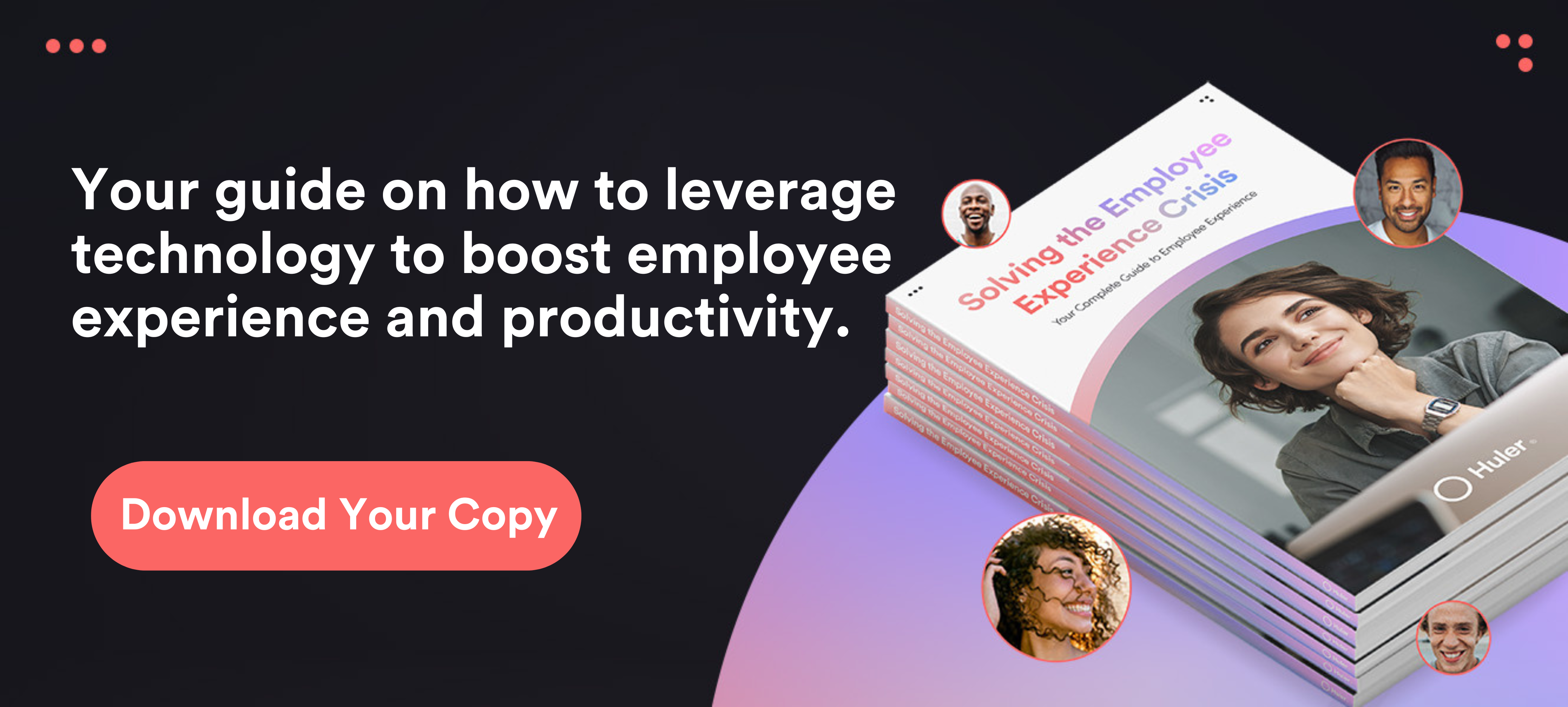Technology is an inescapable reality in today’s world. In every walk of life, tech features heavily in some guise. Whether that’s the ways in which we entertain ourselves, travel, communicate and work. But there are nuances to this that are only just beginning to be explored, especially when it comes to work.
Right now there can be up to four generations in any workplace, these are:
- Baby Boomers (Born 1947-64)
- Generation X (Born 1965-80)
- Millennials (1981-2000)
- Generation Z (2001-2020)
It is fair to say that one of the biggest differentiators between these generations is technology. As technology has moved on leaps and bounds over the decades, each generation has become more au fait and at home with technology, ending with the latest generation to enter the workplace: Generation Z.
Who Are The Digital Natives?
The term ‘digital native’ was first used in 2001 by Marc Prensky, an American writer and speaker who also coined the term ‘digital immigrant’. Digital natives are the same people who make up Generation Z; those people who have grown up, and are comfortable with computers and the internet. Unlike other generations, digital natives in developed countries are so used to using technology in all areas of their lives that it is (and always has been) an integral, necessary part of their day-to-day.
Now, you might be wondering why it is important for us to make the distinction between digital natives and digital immigrants. Surely, in the here and now, we all can access the same technology, so therefore we are on a level playing field?
While it may be true that the majority of people in first world countries have access to the same or similar technology, digital natives haven’t had to change how they see or interact with the world much since 2001. In contrast to millennials and generations that came before them, digital natives process and interact with the world around them through a technology-first lens, setting them apart from generations who have had to assimilate as rapid changes have taken place through the years.
Therefore, when it comes to experiences , digital natives have different expectations to Millennials, Gen X, Baby Boomers and Traditionalists. Having grown up with (relatively) fast, on-demand access to all of the information and entertainment they could ever dream of or imagine, they expect these experiences to remain consistent, or indeed get better, as they move through life.
Earlier generations, however, have lived through rapid technological changes. Pretty much all of the generations prior to Gen Z have lived without on tap access to computers or the internet. They have witnessed first hand the evolution of technology from the advent of mobile phones and personal computers to dial-up internet and beyond. It stands to reason then that their experiences and expectations of technology would differ both from each other and from Gen Z in particular.
Digital Natives: A Deep Dive
Now we understand who digital natives are, let’s explore how we can better understand them, particularly in the context of work.
Marc Presnky’s original article, ‘Digital Natives, Digital Immigrants’ addressed the fact that students in 2001 were no longer the same people the educational system was designed to teach. He went on to explain that the differences between millennials and Gen-Z’s weren’t just incremental or simply down to a change in style or trends. He described ‘the arrival and rapid dissemination of digital technology in the last decades of the 20th century’ as an ‘event which [changed] things so fundamentally that there [was] absolutely no going back.’
In fact, he argues that Gen Z individuals think and process information differently from their predecessors. They are ‘native speakers’ in all things digital, compared to digital immigrants who were not born into the digital world but rather thrown into it and forced to adopt.
It is these differences in how we think (and possibly how our brains are structured) that matter when it comes to building experiences, including in the workplace. It is up to everyone to be cognisant of the fact that, when we are designing experiences for others, different generations will respond and learn from them in different ways.
5 Core Traits Of Digital Natives
In order to build experiences that resonate with digital natives, we need to understand their traits and what drives them.
Digital natives are:
Impatient
We’ve all heard and used the old saying: Good things come to those who wait. But the world doesn’t work that way anymore. Thanks to technology, digital natives have grown up in a world where they don’t have to wait for anything. Information can be surfaced in seconds with a Google search, shopping can be bought and delivered on the same day, communication is instantaneous, as is entertainment thanks to likes of YouTube, Netflix and social media.
In short, instant gratification is the name of the game for Generation Z. They want everything at their fingertips right now – and they aren’t willing to compromise.
Social
Earlier generations might argue that digital natives are anti-social. But that couldn’t be further from the truth. They just don’t socialise in the same way as generations before them. Now, person to person interactions don’t need to take place face to face or via telephone. Instead, they can happen at any time, anywhere thanks to social media and video calling technology.
With the rise in virtual reality and the ‘metaverse’, social media is set to take us even further down the route of playing out our lives online. As we move through the next decade, it will become more commonplace for us to meet and interact with each other in a virtual space, a change that digital natives will find more natural and logical than earlier generations no doubt.
Natural Multitaskers
Digital natives are champion multitaskers. They can be found consuming information on several screens at once and seemingly never miss a beat in their ability to process it all. This is in part driven by the need for instant gratification. If more than one thing is required at once, Generation Z is perfectly comfortable completing tasks simultaneously with the help of the technology they have to hand.
Naturally, then, digital natives get frustrated when they can’t multitask effectively in the ways they are used to. Being forced to slow down is a source of irritation and can lead to abandonment as their patience fast runs out.
Intuitive Learners
Technology isn’t second nature to digital natives, it’s first nature. Many have been clicking, typing, and scrolling since they were small, so not much stumps them when it comes to new platforms, websites and devices. In fact, digital natives find it preferable to work things out on their own over reading instructions. Or, in a worst case scenario, they can quickly find the right answer in seconds just by searching on platforms such as Google or YouTube.
Put simply, digital natives don’t learn like millennials or Generation X-ers, piecing together what they know vs what is true in this digitally driven world. Digital natives use what they know from growing up with technology to work things out intuitively and can quickly process and understand the benefits of tools through their interactions with them.
Early Adopters
Digital natives are also early adopters of technology, which makes sense when you take into account the fact that they are intuitive learners. It is Generation Z who are willing to pay upwards of £1000 on new technology, such as smartphones, tablets and computers. When it comes to brand spanking new features, they are like moths to a flame. They aren’t intimidated or sceptical like their digital immigrant counterparts. Instead, they are often the ones pushing for the uptake of new trends or seeking out new ways of doing things, as can be seen by the rapid change in the ways we socialise, work, and entertain over the last two decades.
Digital Natives In The Workplace
From the above it’s clear that the needs and wants of a digital native in the workplace will be different to those digital immigrants who have learned (or are still learning) to adopt and assimilate to new technology.
If we consider figures in leadership roles right now and in the future, these are likely to be Gen X, Millennials and even Baby Boomers as people retire later. These leaders, who are almost certainly not as au fait with technology as the digital natives, are the keepers of the keys when it comes to investment in technology.
When we consider that a large portion of today’s workforce are not engaged, it forces us to look at the employee experiences we are providing for everyone. Do the current employee journeys we have in place appeal to those 5 core traits of digital natives?
- Are they fast?
- Are they personalised?
- Are they flexible?
- Do they allow for multi tasking?
- Do they provide instant gratification?
- Do they use gamification?
- Do they appeal to early adopters and innovators?
- Does it recognise what is important to digital natives?
If the answer is no, how do we expect our digital natives to thrive in the workplace? If millennial and earlier generations of leaders insist on playing a tug of war that satisfies neither the natives or the immigrants, the whole strategy will ultimately appeal to no one and employees will find their own ways of doing things that aren’t visible or measurable to employers.
Building Inclusive Experiences
So, what is the solution? When you have so many different generations, all with a different approach and perception of technology, how do you appease everyone? Surely, it’s an impossible task?
The answer is that HR and People teams need to build digital employee experiences and digital transformation strategies that meet the expectations of a multigenerational workforce. They need to have the flexibility and level of intuitiveness that digital natives expect, while providing the support digital immigrants need to adopt and engage with the technology that is supposed to make their working life easier, not harder and more frustrating.
Put simply, supporting both digital natives and digital immigrants to thrive requires a mindset that shuns the either/or approach and instead attempts to meet people where they are.
That is where HulerHub comes in. The world’s best looking, fully personalised employee experience platform, the cloud-based system offers intuitive access to everything employees need to succeed in the both the physical and digital workplace. Within HulerHub, employees can access company wide knowledge and content that’s most relevant to them, as well as build their own personalised workspace filled with the tech, tools and information that matters most to them. What’s more, all of this is available on demand, on any device, at any time, anywhere to meet the needs of those digital natives who are leading the way in the uptake of asynchronous working practices and work from anywhere models.
To learn more about Huler and see how HulerHub can help you meet the technological needs of your multigenerational workforce, book a demo today.







